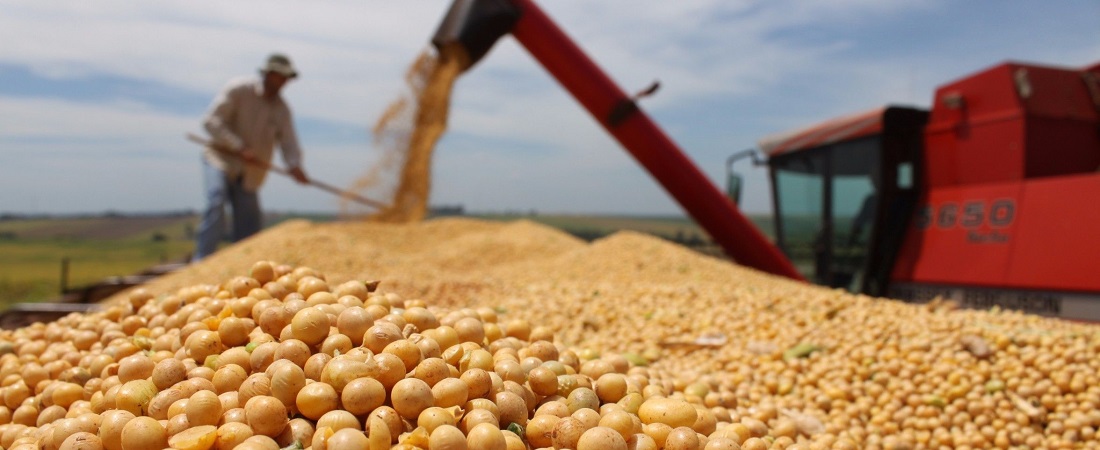
Soybeans become top Brazilian export to Argentina
Jul, 21, 2023 Posted by Gabriel MalheirosWeek 202330
The severe drought in Argentina, which reduced the grain harvest by more than half and wreaked havoc on the country’s already weakened economy, had an unusual effect: soy became the number one product exported by Brazil to its neighbors, leaving behind the traditional list, with items such as vehicles and auto parts. As a result, Argentines were forced to burn even more of their foreign exchange reserves, which became negative.
From January to June this year, purchases of Brazilian soybeans by Argentina increased by 1,160% compared to the first half of last year. The grain now has an unprecedented share of 16% of the total sold to neighbors, while auto parts got 10% and cars 9.1%.
According to Carlos Achetoni, president of the Argentine Agrarian Federation, the race for Brazilian soybeans was focused on serving the milling industry for the production of bran and other derivatives. For him, the most important thing is to guarantee delivery to international customers.
— The soy goes to the processing industry for products that have a very good international insertion — says Achetoni.
Argentina is the world’s largest exporter of processed soybeans, the third largest exporter of corn, and a major global supplier of beef and wheat.
— The Argentines want to touch their industries. Their harvest broke from 50 million to 26 million tons. They buy soybeans from Brazil, Bolivia, and Paraguay — says Teixeira, emphasizing that Argentines give priority to the transformation industry.
For the president of the Brazilian Foreign Trade Association, José Augusto de Castro, as with all soy-producing countries, the crop is sold even before it is planted and harvested. Product delivery is in the future.
— With the crop failure, many people sold the product and do not have to deliver. There are international contracts that need to be honored – says Castro.
Exports to Argentina increased by 26.3
In the first half of this year, Brazil sold US$ 1.5 billion in soybeans to Argentina. Sales of all Brazilian products to the neighboring country increased by 26.3%, totaling US$ 9.452 billion. Exports of auto parts increased by 31.3%, automobiles by 15.7%, and iron and steel tubes by more than 1,000%. There was a decrease in paperboard (13%) and fuel oils (15%).
In the evaluation of the president of the AEB, dollars will be lacking in Argentina to buy other products.
— They are obliged to import soybeans to fulfill international commitments for future sales. Undoubtedly, dollars will be lacking to buy other products. It must already be missing – says José Augusto de Castro.
Until the end of last month, Argentine foreign exchange reserves were negative by almost US$ 3 billion. As Argentina needed to pay the International Monetary Fund (IMF) a tranche of US$2.7 billion, the country’s reserves are in the red by almost US$6 billion.
Negotiation with IMF
Concerned about the lack of foreign currency, the government asks the IMF to bring forward the three disbursements planned until the end of the year for a single tranche of US$ 10.6 billion. This would prevent what Argentines call “bleeding reserves.”
Gustavo Cupertino, general coordinator of statistics and commercial analysis at the Secretary of Commerce and International Relations of the Ministry of Agriculture, points out that Argentina harvested its lowest harvest in the last 20 years after one of the worst droughts in decades. The country faces, for the third consecutive year, the La Niña phenomenon.
— As the country has a good capacity for crushing soybeans into grains and is one of the largest exporters of soybean oil and meal, there was a need to import Brazilian grain to meet the internal needs caused by the drought — says Cupertino.
A phenomenon that, unlike El Niño, causes drought in the South and rains in the Northeast, La Niña also affects Brazil. Rio Grande do Sul, for example, is hit for the third time by an interminable drought. Producers in the region ask for financial help from the Brazilian government.
Source: O Globo
To read the original report, see: https://oglobo.globo.com/economia/noticia/2023/07/21/vendas-de-soja-brasileira-para-a-argentina-no-primeiro-semestre-cresceram-mais-de-1000percent-com-a-seca-no-pais-vizinho.ghtml
-
Ports and Terminals
Jan, 28, 2021
0
TCP handles almost 40% of Brazil’s vegetable resin
-
Feb, 18, 2025
0
Medical Device Exports Surpassed $1 Billion in 2024
-
Shipping
May, 24, 2019
0
CMA CGM buys 50,000 container trackers
-
Other Cargo
Dec, 04, 2018
0
Argentine fishermen end strike after 80% pay rise

